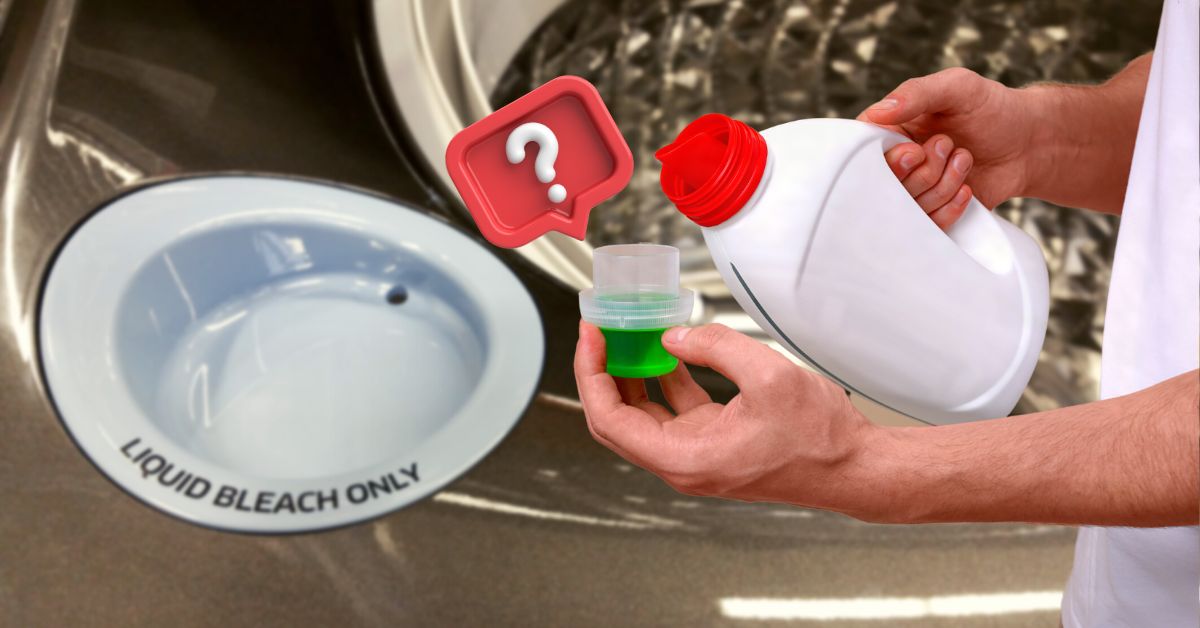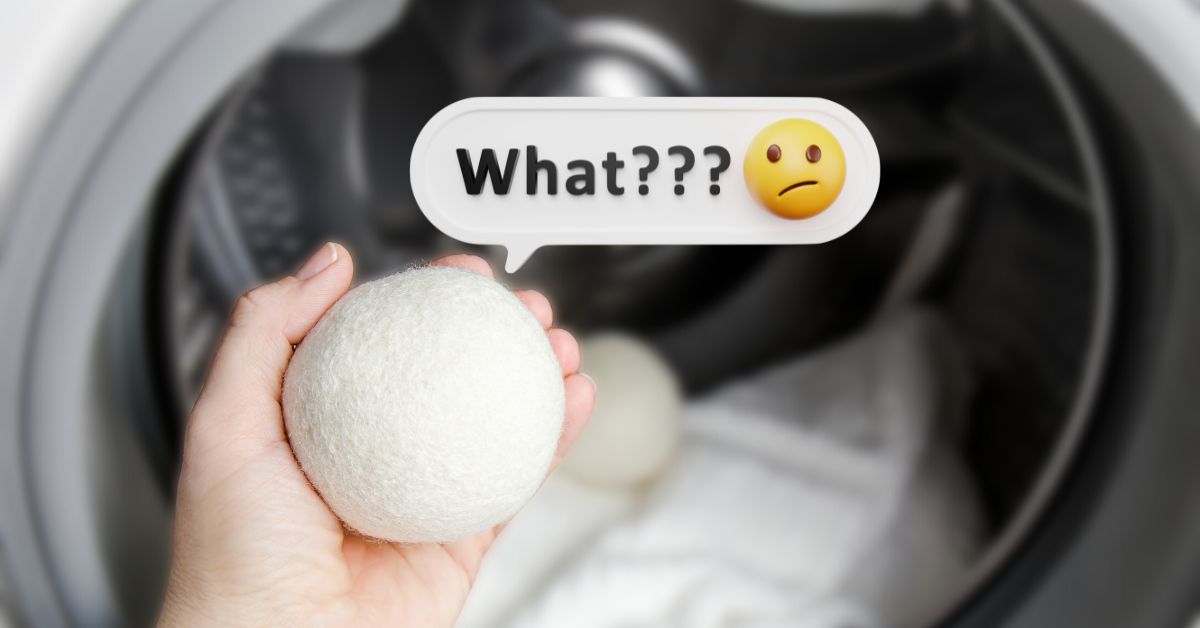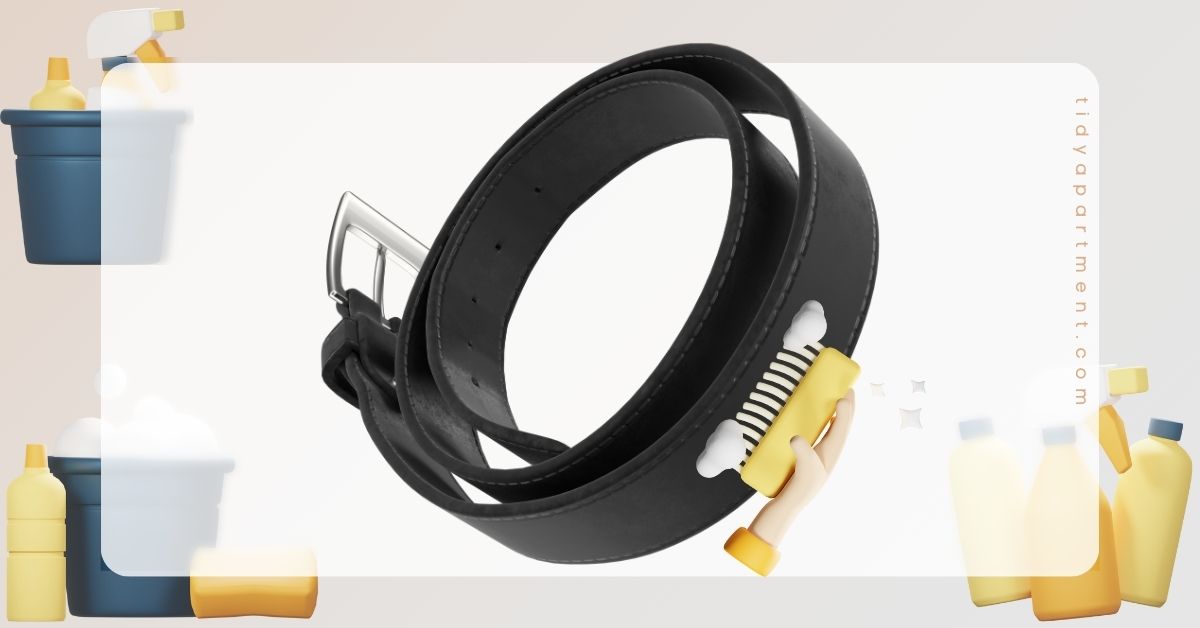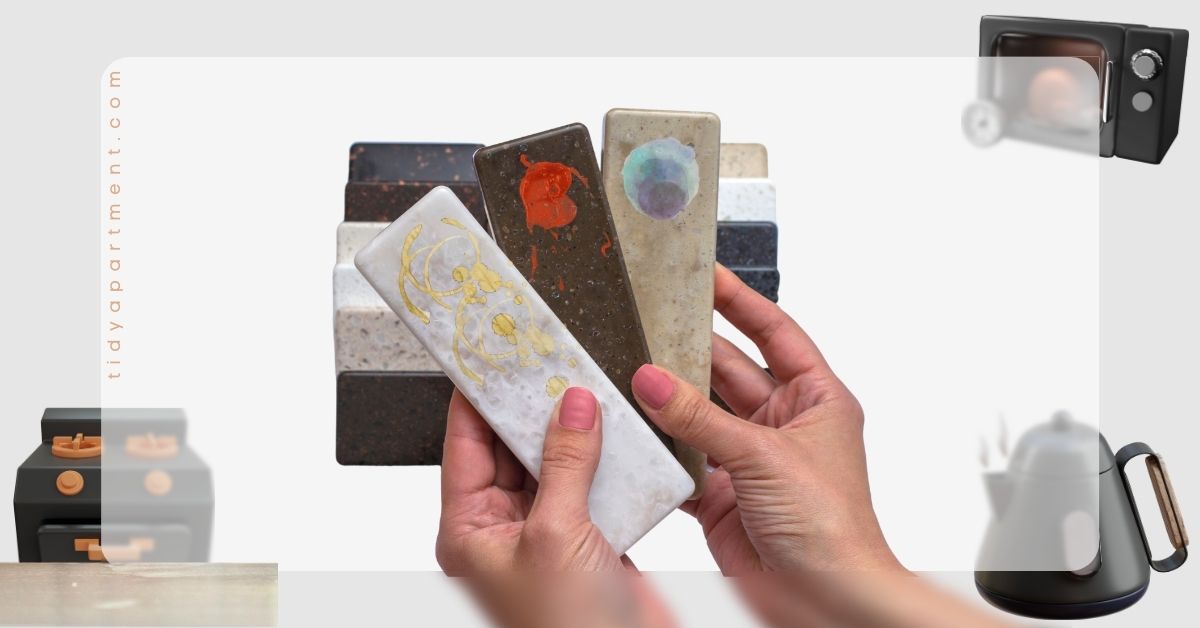We’ve all been there, standing in front of the washing machine, wondering if it’s safe to pour fabric softener into the bleach dispenser or if your washing machine does not have a fabric softener dispenser. You might wonder whether you can put fabric softener in the bleach dispenser.
Page Content
Can I Put Fabric Softener in the Bleach Dispenser?
No, you should not add fabric softener to the bleach dispenser. A few reasons you shouldn’t do this are:
- Fabric softeners and bleach are chemically incompatible. Mixing them together can create toxic fumes like chlorine gas and reduce the effectiveness of both products.
- The bleach dispenser is designed explicitly for bleach. The times for adding bleach and fabric softener during the washing cycle vary. Using it for fabric softener can disrupt this process.
- If fabric softener is added to the bleach dispenser, it may not rinse out completely during the wash cycle. This can leave fabric softener residue on your clothes, leading to stains and an unpleasant feel.
- Pouring fabric softener into the bleach dispenser can also clog the dispenser and the associated plumbing within your washing machine. This can lead to maintenance issues and costly repairs down the line.
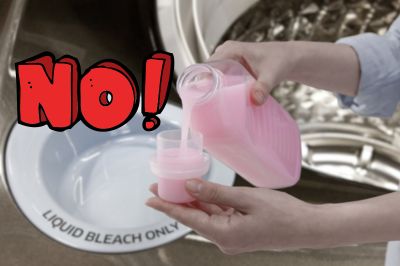
Where Should I Pour Fabric Softener Into My Washing Machine?
You will find the fabric softener dispenser on the top-load washer. Locate a tiny dispenser cup where you pour your fabric softener, just at the center of the agitator. Look for the mark “III” or “3” or a flower or a star symbol.
How to Use Fabric Softener Without A Dispenser?
To add fabric softener to a washing machine without a dispenser, follow these steps:
- Measure the fabric softener (usually 1/4 to 1/2 cup).
- Use a measuring cup or dispenser ball.
- Load your laundry.
- During the rinse cycle, pause the machine.
- Pour fabric softener directly into the drum.
- Resume the wash cycle.
Don’t pour fabric softener directly on the clothes, as it can stain the clothes.
Alternatives for Fabric Softener
Some of the alternatives to traditional fabric softener are:
Related: 7 Best substitute for fabric softener.
1. Dryer Sheets
While not entirely an alternative, if you prefer the convenience of dryer sheets, look for eco-friendly or reusable dryer sheets. These can be used multiple times before disposal.
Related: Dryer balls vs. dryer sheets.
2. Wool Dryer Balls
These reusable balls help fluff and soften your laundry in the dryer. They work by separating clothes and allowing warm air to circulate more effectively. You can add a few drops of essential oil to the dryer balls for a pleasant scent.
Related: How to clean wool dryer balls?
3. Vinegar
White distilled vinegar is an excellent natural fabric softener. Add about 1/4 to 1/2 cup of vinegar to the rinse cycle dispenser or directly to the drum. It softens clothes, reduces odors, and helps remove detergent residue.
Related: Will vinegar bleach black clothes?
4. Baking Soda
Baking soda can be used in the rinse cycle as well. About 1/4 cup of baking soda can help soften clothes, eliminate odors, and remove stains.
How Does the Bleach Dispenser Work in a Washing Machine?
The bleach dispenser in a washing machine is a crucial component that ensures proper and safe dispensing of bleach during the laundry cycle.
- The bleach dispenser is typically located near the detergent dispenser; the bleach dispenser is a separate compartment designed only to hold liquid bleach.
- Add undiluted bleach to the bleach dispenser.
- The washing machine adds the bleach during the early stage of the wash cycle.
- As the water starts to flow in the washing machine, bleach is slowly blended with the water to create a diluted solution.
- After the bleach is dispensed and the wash cycle is complete, the washing machine typically goes through a rinse cycle to ensure that any remaining bleach is thoroughly washed away from your clothes.
Use bleach only for white clothes that are exceedingly dirty. Color-safe, non-chlorine bleach is the best bet for colored garments. However, read the washing instructions on the care label. It will save your clothes from unnecessary damage.
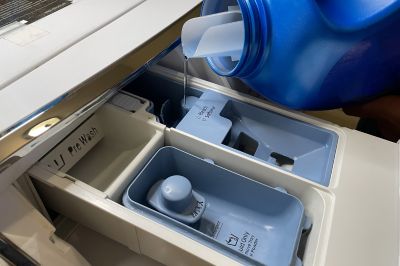
Harmful Effects of Mixing Bleach and Fabric Softener
Do not mix fabric softener with bleach for a safe wash and to prevent damage to your clothes. Both bleach and fabric softeners are not exchangeable. On the contrary, they pose a severe health risk. Mixing bleach and fabric softener can create chlorine gas.
Accidental inhalation of chlorine gas irritates the nose, throat, and lungs. It leads to difficulty breathing and a burning feeling. Intense chlorine exposure leads to pulmonary edema, accumulating fluid in the lungs. Chlorine is also known to corrode the internal parts of the washing machine, eventually damaging it and the fabrics.
Imagine the health hazard when chlorine gas escapes from your tiny washing room. You won’t get enough time and space to escape, right? It’s not that you should stop stocking bleach at home. Bleach is fantastic when used appropriately to remove dirt and stains from your clothes. Do read the washing instructions on the care label for proper use of bleach.
What Will Happen If I Fill Bleach Dispenser With Detergent?
Filling the bleach dispenser with detergent won’t pose a risk to your garments or washing machine. However, you will fail to clean your clothes properly and spend extra time laundering them.
Using detergent instead of bleach in the dispenser will ruin your laundry game. It won’t remove stains or filthy odors from your clothes. The liquid chlorine released from the liquid bleach helps remove the stains and clean the clothes effectively.
Three Compartments of Washing Machine
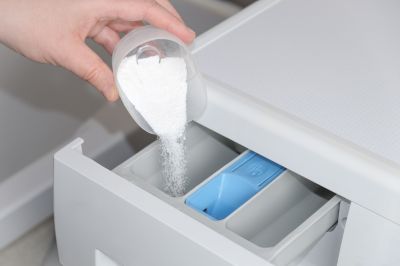
1. ‘Pre-wash’ Compartment
Some machines have a pre-wash compartment. The pre-wash compartment is particularly useful for heavily soiled items or garments with tough stains. It facilitates the primary wash cycle, as stubborn stains and dirt removal happen in this compartment. This compartment is marked “I” or “1”.
Today, many find this a redundant compartment that is left unused. Because modern machines, capsules, powders, and liquids effectively clean clothes that are excessively dirty without any pre-wash.
2. Main-wash Compartment
Marked as “II” or 2,” this is the compartment where you use liquid or powder doses. In addition, you can also add a stain remover to this compartment. Fill this compartment with detergent, whether liquid or powdered.
3. Conditioner Compartment
This section is the tiniest in the washing machine, where fabric softeners or conditioners go. It’s marked as “III” or “3” or a flower or a star symbol. Don’t overfill this compartment. To avoid overfilling, check for the max line marked on it and fill the softener below it.
Conclusion
Fabric softeners play a fantastic role in softening your clothes and giving them a fresh fragrance. However, all machines do not have a fabric softener dispenser, triggering many to put it in a bleach dispenser.
Well, it’s an awful idea to put fabric softener in the bleach dispenser, as bleach and fabric softener won’t exchange with each other. On the other hand, if mixed, it produces chlorine gas, which disperses into the air around you and is a health hazard.
Related: Can you use fabric softener as a detergent?
Related: How to fix thick fabric softener?
